Beliefs are constructs that we form as part of our cognitive and social development. They form a system, which we call our belief system that is tied to what we believe about ourselves and the world. Beliefs affect almost every part of our daily experience because it is how we perceive our everyday experience and thus make sense of the world too.
Limiting beliefs are beliefs that limit us somehow in our thinking and perspective that leads to us inadvertently holding ourselves back from taking action and fulfilling our dreams in life. Forming and existing within the mind, they are created as a result of conditioning from our environment, people, culture and family we are born into. They are woven into our perception of the world, our daily life and influence our thoughts, feelings and emotions too.
A limiting belief may prevent you from completing a project, goal, or desire. It can stop you from fulfilling something in life, whether that’s in your studies, work, relationships or wider life. Limiting beliefs effectively control many outcomes in our lives because what we believe is true is reinforced and occurs as a result.
One of the most common limiting beliefs in culture is not being good enough, which ends up inhibiting a pathway we’d like to go down because we believe it’s true even though in the grand scheme of things it’s not; we are good enough.
One essential component of limiting beliefs is that they block us from moving forwards and expanding in life. Creativity is a natural gift we are all born with and when there are limiting beliefs stopping expansion, our creative flow is inhibited too. Creativity plays a role in expressing who we are, which when blocked causes dissatisfaction and inhibits us realising our true potential.
What is a limiting belief?
We are born into multiple belief systems that shape our own beliefs as we grow and develop. Namely, from our families, society, culturally and historically from generations before us. Some of our beliefs are therefore inherited in some way and some confirmed, moulded or changed as we learn about the world based on our lived experience of it.
What appears as intangible because beliefs exist in the mind, there are many psychological factors that contribute to beliefs such as judgement, reasoning, memory, social and cognitive functions and emotional processing too. Beliefs are indeed tangible in the very outcomes that result from them. For example a belief that the sun will rise tomorrow morning because it has done every other day of our life so far.
Beliefs on the one hand are based on patterns of predictability in terms of how we reason and think about the world from an external perspective. They are however, entwined with our internal factors that make up beliefs in how we think and make judgements about ourselves, which result in somewhat predictable behaviour too. For example, a belief you hold about yourself such as an aspect of personality like being shy, outgoing or fun influences behaviours such as introverted or extroverted tendencies that we may display as a result of our beliefs.
Limiting beliefs hold us back from doing what we want to, whether that’s due to a simple decision we want to make or larger goals such as establishing an exercise routine or pursuing goals and dreams in life. There is much research in psychology, sociobiology and neuroscience that has shown how limiting beliefs impact our experience of life and there are many approaches and modalities in which we can identify limiting beliefs and further still, overcome them.
Where do limiting beliefs show up in our lives?
Beliefs and therefore limiting beliefs, are directly related to self esteem, confidence and self worth. How we think, feel and view ourselves correlates to what we believe about ourselves and vice versa. This is often formed early on during childhood development when we grew up within our environment and interactions with our parents, peers and teachers that contribute and shape our beliefs about ourselves and the world.
Limiting beliefs can be connected to the wounded parts of ourselves that don’t believe something is neutral or positive. As a result of our conditioning whilst growing up and often reinforced over time, limiting beliefs have a strong base within us and can hold us back from growing, creating and trying new things in life. Additionally they can squash our dreams, keep us in our comfort zone and subconsciously run our lives without awareness of them doing so.
Limiting beliefs can result in creative blocks, procrastination, dissatisfaction and frustration in life. They exist and show up in our relationships, work life, social life and personally in overall satisfaction and well-being. Recognising limiting beliefs is paramount in shifting out of negative thought patterns that cause us to behave in certain ways that limit us.
The following are examples of how limiting beliefs impact our life:
- Shrinking, playing small and being afraid to be seen and heard
- Lacking in confidence
- Feeling insecure
- Indecisiveness, doubt and second guessing yourself
- Procrastination
- Low self worth
- Low self esteem
- Negative thoughts and judgements about yourself
- Conforming and fitting in with others’ wants and world views to be accepted
- Uninspired and lack of creativity
Initially raising awareness through curiosity and inquiry about areas of your life that are feeling limited or blocked begins the process of identifying limiting beliefs and then finding tools and techniques to overcome them.
The role of creativity in self fulfilment
Creativity holds the key to authentic expression; it is our very centre of life force expression. Without being able to express ourselves creatively, there is a missing piece to being fulfilled. We are all born creative beings and yet as we go through life things happen along the way that pull us down, hold us back and inhibit us from achieving things we want to.
In childhood we develop wounds, inhibitions and blocks to creativity such as being told we are wrong, bad or that it’s wrong and bad to make mistakes. An inherent limiting belief that we all carry is ‘I’m not good enough.’ This has been reinforced through our experiences and interactions in the world socially and we subconsciously internalise them in the form of believing what we are told.
Perhaps you can remember as a child being asked a question in school that you didn’t know the answer to, perhaps experiencing feelings of shame, embarrassment and even guilt. Depending on the interaction, whether culturally and socially a limiting belief that is reinforced, correlates directly on the strength of that belief. Also, the impact a one time or repeated experience has on us as individuals is linked to the strength of the limiting belief.
If we believe on a subconscious level that we are not good enough, we behave in a way that fulfils this belief; we stop creating, we don’t express ourselves, we keep ourselves hidden through fear of making mistakes and being told (again) ‘we’re not good enough’.
Our art and creative expression therefore gets squandered and we lose touch with a vital part of life; of free and unconditional expression that is the very essence of creativity. Thus leading to a sense of unfulfillment.
Unleash your creative expression
Creative expression such as art has often been subject to limiting beliefs such that it has to be expressed in a certain way, style, form and taste. This is limiting because it puts parameters on the expression of creativity which in itself is limitless. Finding practical ways each day to embrace creativity will begin to encourage and rewrite the limiting belief that you cannot express, to one that shows you you can.
Overcoming limiting beliefs involves taking action. Raising awareness, becoming conscious and paying attention to the beliefs you hold are the first step in recognising how certain beliefs are limiting you. Focusing on what you want and what provides fulfilment in your life can direct you in where your creative expression is wanting to be expressed. It is also the path to a more expressed and fulfilling life.
Our creative gifts are within us, supporting our journey of self expression, authenticity and this involves overcoming limiting beliefs that are holding us back from living in alignment with who we really are. Opening to the realisation that beliefs are tangible; they can be updated and replaced with ones that serve us. The cycle of overcoming limiting beliefs and replacing them with supportive ones reinforces messages that build self esteem, gradually enabling creative expression to be liberated and contribute to fulfilling our goals, desires and dreams.
Stay tuned for part two of this article where practical examples of how to overcome creative blocks will be explored and shared. If you wish to read more about how limiting beliefs are connected to childhood, there are modalities such as inner child work that examine the roots of conditioning and support you in overcoming limiting beliefs with tangible tools and techniques in a trauma informed, safe setting of a holistic based approach to personal healing and growth.



